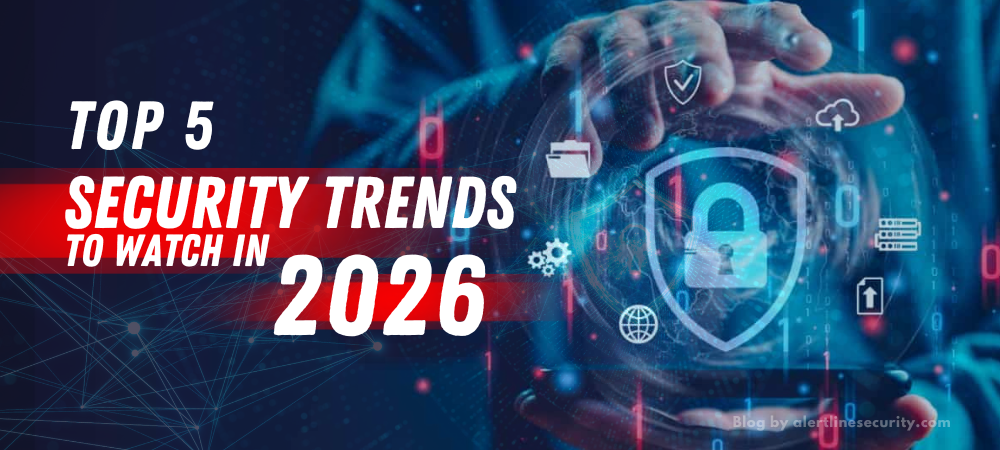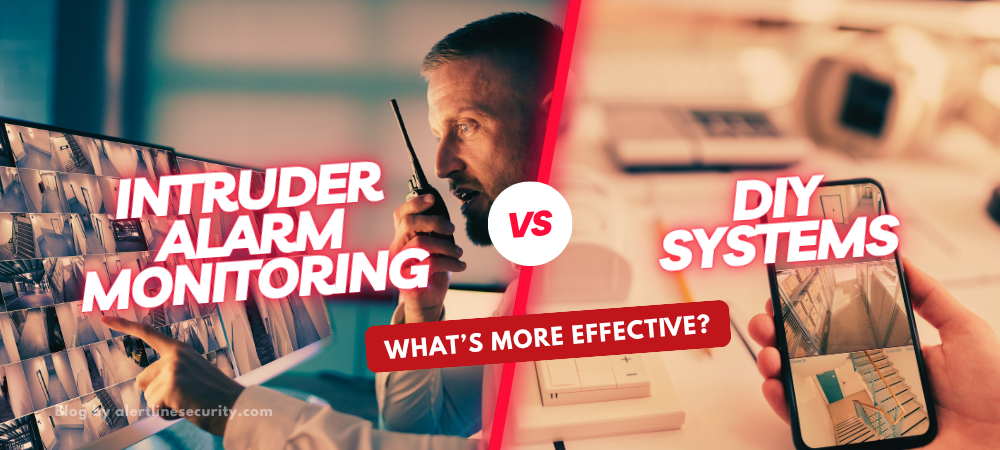Top 5 Security Trends to Watch in 2026

As the world becomes increasingly digital and interconnected, security challenges continue to evolve at an unprecedented pace. From sophisticated cyberattacks to the growing demand for intelligent surveillance, the need for integrated and adaptive protection systems has never been greater. The future of security in 2026 is not just about responding to threats—it’s about predicting and preventing them through innovation, automation, and intelligence.
Here are the top five security trends set to shape the industry in 2026, both globally and in Ireland.
1. Artificial Intelligence and Predictive Threat Detection
Artificial Intelligence (AI) has already transformed the security landscape, but 2026 will mark a new era in threat detection technology in Ireland and worldwide. AI-driven systems are no longer limited to analysing static data—they can now learn from behavioural patterns, detect anomalies in real time, and predict potential breaches before they occur.
In cybersecurity, AI algorithms are being integrated into firewalls, antivirus systems, and network monitoring tools to identify irregular activities that could signal an attack. Similarly, in physical security, AI-powered CCTV and access control systems are capable of recognising suspicious movements, tracking unauthorised personnel, and alerting security teams instantly.
In Ireland, the adoption of AI-driven threat detection technology is particularly strong across sectors such as finance, healthcare, and construction, where data protection and site safety are top priorities. By 2026, predictive analytics and machine learning will become the backbone of proactive defence systems—turning reactive security into intelligent prevention.
2. Rise of Zero Trust Security Architecture
One of the most significant cybersecurity trends in 2026 is the widespread implementation of Zero Trust architecture. The traditional “trust but verify” model is no longer sufficient in a world where remote work, cloud computing, and connected devices dominate business operations.
Zero Trust works on a simple yet powerful principle: “Never trust, always verify.” It ensures that every user, device, and application must be continuously authenticated, authorised, and validated before gaining access to a network. This approach significantly reduces the risk of internal breaches and unauthorised access, especially in hybrid work environments.
In Ireland, both public and private organisations are increasingly adopting Zero Trust frameworks to safeguard sensitive data and ensure compliance with GDPR and other data protection regulations. As cyber threats grow in sophistication, this model will become a global security standard by 2026.
3. Integration of Physical and Cybersecurity Systems
The line between physical and digital security is rapidly disappearing. In 2026, integrated security ecosystems will connect cybersecurity tools, surveillance cameras, access control systems, and alarm technologies into one unified platform.
For example, an access control breach at a facility could automatically trigger a cybersecurity response, such as isolating a compromised network segment or alerting administrators in real time. Likewise, suspicious online activity could prompt a physical lockdown or enhanced monitoring through CCTV.
In Ireland, this convergence is especially relevant for high-risk industries like logistics, manufacturing, and infrastructure. Companies are recognising that true security requires a holistic approach, where digital and physical defences work hand in hand. By combining these systems, businesses can streamline their operations, improve incident response times, and enhance overall situational awareness.
4. Expansion of Cloud-Based Security and Data Protection
Cloud technology continues to revolutionise how data is stored and managed—but it also introduces new vulnerabilities. As businesses shift towards hybrid and remote models, cloud-based security solutions are becoming essential.
By 2026, more organisations will rely on cloud-native security platforms that offer continuous monitoring, automated updates, and scalable protection. These solutions use advanced encryption and AI-driven insights to secure cloud environments against unauthorised access, ransomware, and data leaks.
The future of security in 2026 will also prioritise data sovereignty—ensuring that sensitive information stored in the cloud remains under the jurisdiction of its originating country. In Ireland, where many multinational tech companies operate, this is especially crucial. As EU regulations evolve, organisations will need to balance flexibility with strict data protection requirements, making secure cloud infrastructure a cornerstone of modern defence strategies.
5. Biometric Security and Behavioural Authentication
The use of biometric identification—such as fingerprints, facial recognition, and voice verification—is expected to expand dramatically by 2026. However, the next generation of biometric security goes even further: behavioural authentication.
This emerging trend analyses unique user behaviours, such as typing rhythm, device movement, and even mouse patterns, to confirm identity. It adds an additional layer of protection that is far more difficult for cybercriminals to replicate.
In corporate and financial environments, behavioural biometrics are already being integrated into digital banking and employee access systems. In Ireland, this technology is gaining traction across smart buildings, healthcare facilities, and government services. The combination of traditional biometrics with behavioural analytics creates a powerful tool against identity theft and unauthorised system access.
By 2026, biometric and behavioural authentication will play a vital role in ensuring secure transactions, user privacy, and seamless access control—enhancing convenience without compromising safety.
The Growing Role of AI and Automation
Across all these trends, one theme stands out: automation powered by AI. From monitoring to response, automation enables faster, more accurate decisions without human intervention. Security systems can now analyse massive data streams, identify threats within seconds, and initiate containment protocols automatically.
This doesn’t mean replacing human security professionals—it means empowering them. With intelligent automation, teams can focus on complex problem-solving and strategic decision-making while machines handle repetitive monitoring tasks.
As Ireland continues to invest in digital transformation, AI-driven automation will become an essential part of both cybersecurity and physical security strategies.
Preparing for the Future of Security in 2026
The future of security in 2026 will be defined by adaptability, intelligence, and integration. Organisations that embrace these advancements will be better positioned to anticipate risks, mitigate threats, and maintain trust with their clients and stakeholders.
Whether it’s through AI-based threat detection technology, Zero Trust architecture, or cloud-integrated defence systems, the emphasis will shift from reactive protection to proactive resilience.
In Ireland and across the globe, security professionals, technology providers, and policymakers must collaborate to build a safer digital and physical environment. The pace of innovation is relentless—and staying ahead of emerging threats requires continuous learning, investment, and agility.
Final Thoughts
The security landscape in 2026 promises to be both challenging and transformative. As cyber and physical threats become more complex, the industry’s evolution will hinge on smart technologies, data-driven insights, and adaptive defences.
From AI-powered prediction to biometric verification, each innovation brings us one step closer to a world where security is seamless, intelligent, and future-ready.
The future is here—are you prepared for it?
SEND US MESSAGE
RECENT POSTS

As the world becomes increasingly digital and interconnected, security challenges continue to evolve at an unprecedented pace. From sophisticated cyberattacks...

In today’s fast-moving world, security needs go far beyond simple camera setups. Businesses, events, residential properties, and even vulnerable individuals...

Intruder Alarm Monitoring vs. DIY Systems: What’s More Effective? In today’s world, home and business security are more important than...

When to Hire a Risk and Security Consultant: Key Signs for Businesses In today’s uncertain and fast-changing world, businesses face...
